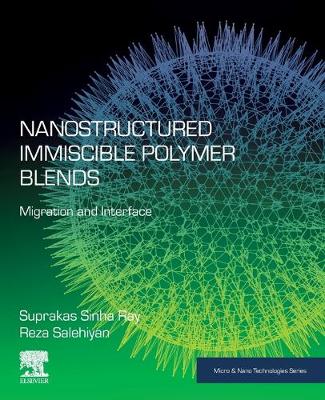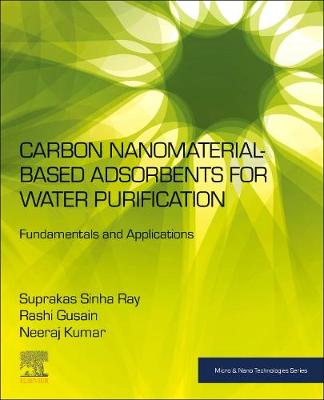Micro & Nano Technologies
2 total works
Nanostructured Immiscible Polymer Blends
by Suprakas Sinha Ray and Reza Salehiyan
Published 18 September 2019
Nanostructured Immiscible Polymer Blends: Migration and Interface covers a wide range of nanoparticle types, emphasizing the mechanisms and parameters involved in the migration of nanofillers inside immiscible polymer blends. This book explores the influence of nanoparticle migration on the localization, and hence, morphology development, electrical conductivity, and met-rheological properties of blended composite materials. As the influence of solid particles, ranging in size from several hundred nanometers to a few microns in immiscible polymer blends has been extensively studied for use as compatibilizers, morphology stabilizers, and reinforcement agents, this book is a timely resource.
Carbon Nanomaterial-Based Adsorbents for Water Purification
by Suprakas Sinha Ray, Rashi Gusain, and Neeraj Kumar
Published 26 June 2020
The deterioration of water quality and unavailability of drinkable water are pressing challenges worldwide. The removal of toxic organic and inorganic pollutants from water is vital for a clean environment, as a response to water scarcity. Adsorption-based water technologies are among the most widely used because of their high efficiency and low cost, without relying on a complex infrastructure. In recent years, carbon nanomaterials (CNMs), such as graphene and derivatives, carbon nanotubes, carbon nanofibers, nanoporous carbon, fullerenes, graphitic carbon nitride, and nanodiamonds have been extensively exploited as adsorbents due to their extraordinary surface properties, ease of modification, large surface area, controlled structural varieties, high chemical stability, porosity, low density, ease of regeneration, and reusability.
This book provides a thorough overview of the state of the art in carbon nanomaterials as they are used for adsorption applications in water purifications, as well as addressing their toxicological challenges. This volume primarily explores the fundamentals of adsorption, its mechanical aspects, synthesis and properties of CNMs, and adsorption performances of CNMs and their nanocomposites with organic and inorganic materials. Structural engineering and activation processes produce materials with enhanced adsorptive properties and separation efficiencies. Furthermore, the formation of CNMs with 2D and 3D macro-and microstructures and high porosities is a potential approach to improve adsorption performances and extend CNM use at the industrial level. The book also addresses important issues regarding these adsorbents that potentially affect future research and industrial applications of carbon-based nanoadsorbents in water security.
This book provides a thorough overview of the state of the art in carbon nanomaterials as they are used for adsorption applications in water purifications, as well as addressing their toxicological challenges. This volume primarily explores the fundamentals of adsorption, its mechanical aspects, synthesis and properties of CNMs, and adsorption performances of CNMs and their nanocomposites with organic and inorganic materials. Structural engineering and activation processes produce materials with enhanced adsorptive properties and separation efficiencies. Furthermore, the formation of CNMs with 2D and 3D macro-and microstructures and high porosities is a potential approach to improve adsorption performances and extend CNM use at the industrial level. The book also addresses important issues regarding these adsorbents that potentially affect future research and industrial applications of carbon-based nanoadsorbents in water security.

